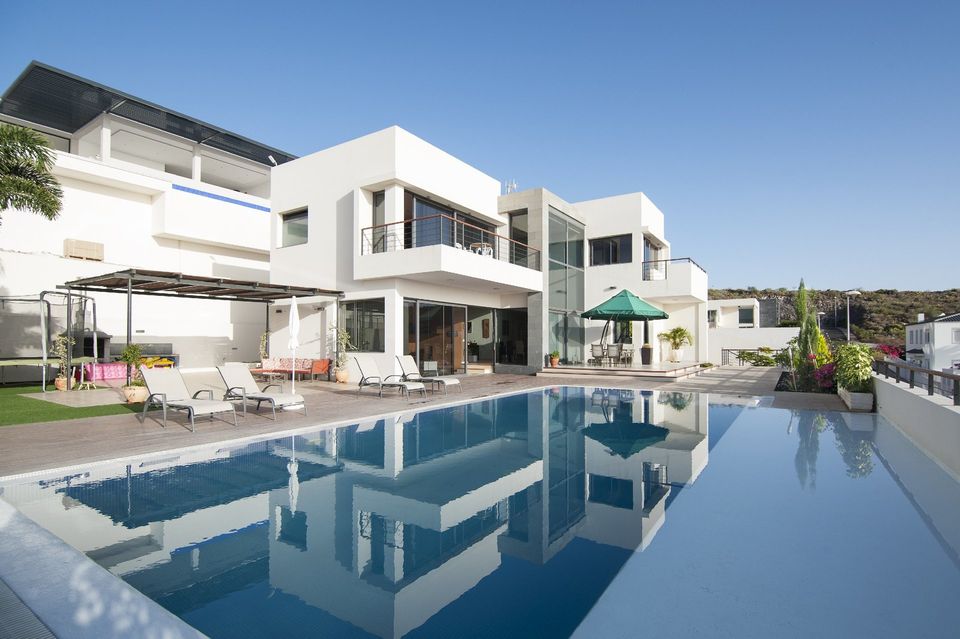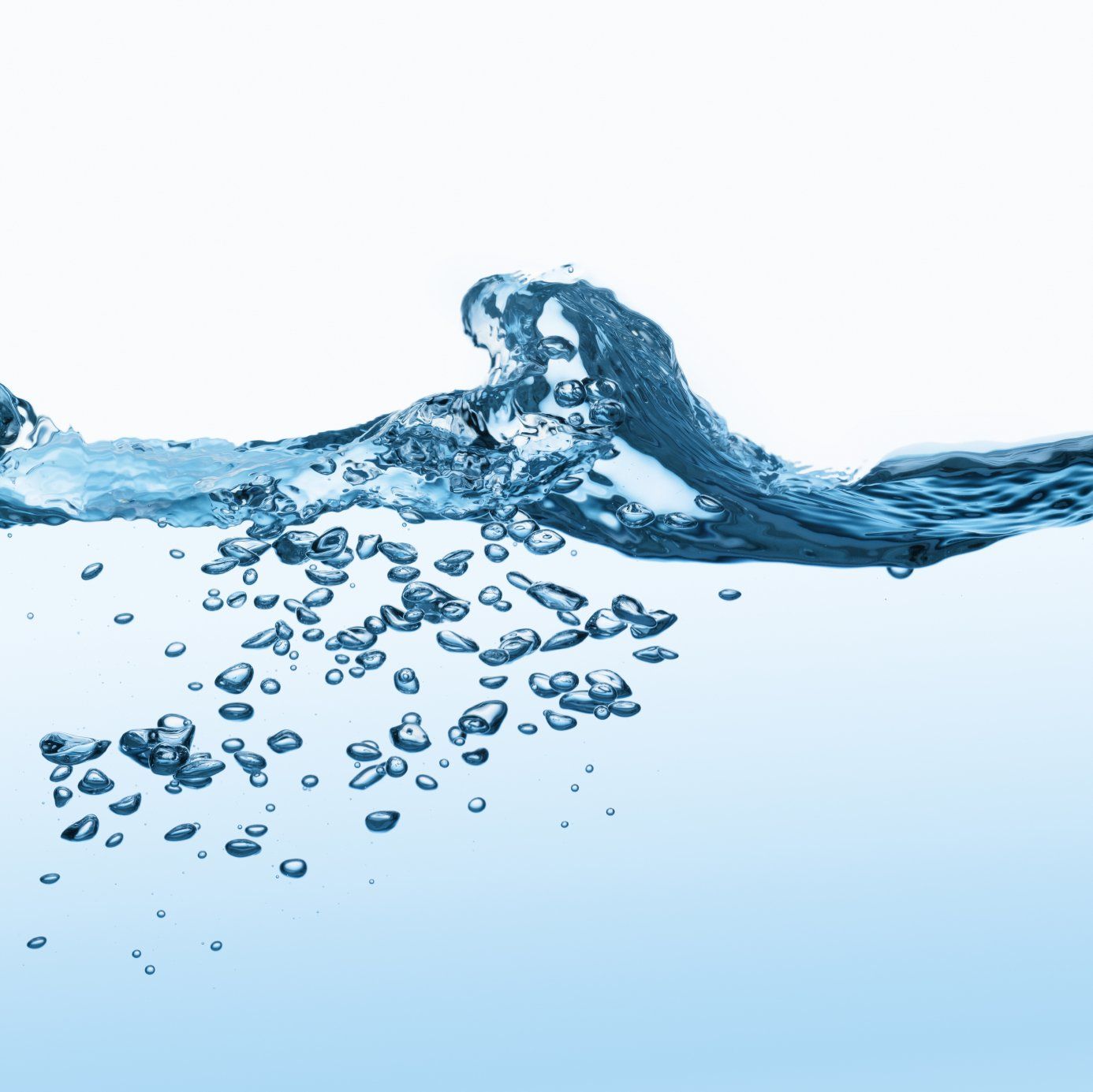Water Reticulation - Estate Water Distribution
Lanre Olabisi • August 24, 2020
WE DESIGN, CONSTRUCT AND MAINTAIN WATER FOR SMALL AND BIG ESTATES

Effective design, installation and operation of water distribution system conserve water, energy, provide free flow and prolong the useful life of the water facility/infrastructure.

Reverse osmosis (RO) is a membrane-technology filtration method that removes many types of large molecules and ions from water. The result is that the solute is retained on the pressurized side of the membrane and the pure solvent is allowed to pass to the other side. Reverse osmosis system offersoffers one of the best ways of producing clean water for drinking, domestic and industrial uses. The system is very efficient, being capable of removing up to 95% of the contaminants in your water. In most cases, reverse osmosis does not require maintenance for the first two to three years, depending on the quality of the inflow water, it may work for many years without any hitch. To understand the purpose and process of Reverse Osmosis you must first understand the naturally occurring process of Osmosis. Osmosis is a naturally occurring phenomenon and one of the most important processes in nature. It is a process where a weaker saline solution will tend to migrate to a strong saline solution. Examples of osmosis are when plant roots absorb water from the soil and our kidneys absorb water from our blood. Below is a diagram which shows how osmosis works. A less concentrated solution will have a natural tendency to migrate to a solution with a higher concentration. For example, if you had a container full of water with a low salt concentration and another container full of water with a high salt concentration and they were separated by a semi-permeable membrane, then the water with the lower salt concentration would begin to migrate towards the water container with the higher salt concentration. Reverse Osmosis Reverse Osmosis works by using a high-pressure pump to increase the pressure on the salt side of the RO and force the water across the semi-permeable RO membrane, leaving almost all (around 95% to 99%) of dissolved salts behind in the reject stream. The amount of pressure required depends on the salt concentration of the feed water. The more concentrated the feed water, the more pressure is required to overcome the osmotic pressure. The desalinated water that is demineralized or deionized, is called permeate (or product) water. The water stream that carries the concentrated contaminants that did not pass through the RO membrane is called the reject (or concentrate) stream. As the feedwater enters the RO membrane under pressure (enough pressure to overcome osmotic pressure) the water molecules pass through the semi-permeable membrane and the salts and other contaminants are not allowed to pass and are discharged through the reject stream (also known as the concentrate or brine stream), which goes to drain or can be fed back into the feed water supply in some circumstances to be recycled through the RO system to save water. The water that makes it through the RO membrane is called permeate or product water and usually has around 95% to 99% of the dissolved salts removed from it. It is important to understand that an RO system employs cross filtration rather than standard filtration where the contaminants are collected within the filter media. With cross filtration, the solution passes through the filter, or crosses the filter, with two outlets: the filtered water goes one way and the contaminated water goes another way. To avoid build-up of contaminants, cross-flow filtration allows water to sweep away contaminant build up and also allow enough turbulence to keep the membrane surface clean. What contaminants will Reverse Osmosis remove from water? Reverse Osmosis is capable of removing up to 99%+ of the dissolved salts (ions), particles, colloids, organics, bacteria and pyrogens from the feed water (although an RO system should not be relied upon to remove 100% of bacteria and viruses). An RO membrane rejects contaminants based on their size and charge. Any contaminant that has a molecular weight greater than 200 is likely rejected by a properly running RO system (for comparison a water molecule has a MW of 18). Likewise, the greater the ionic charge of the contaminant, the more likely it will be unable to pass through the RO membrane. For example, a sodium ion has only one charge (monovalent) and is not rejected by the RO membrane as well as calcium for example, which has two charges. Likewise, this is why an RO system does not remove gases such as CO2 very well because they are not highly ionized (charged) while in solution and have a very low molecular weight. Because an RO system does not remove gases, the permeate water can have a slightly lower than normal pH level depending on CO2 levels in the feed water as the CO2 is converted to carbonic acid. Reverse Osmosis is very effective in treating brackish, surface and groundwater for both large and small flows applications. Some examples of industries that use RO water include pharmaceutical, boiler feed water, food and beverage, metal finishing and semiconductor manufacturing to name a few. Our Kitchen Reverse Osmosis system is designed and produced from Turkey. It is a six-stage filtration system. The mineral filter will re-mineralize your water to the standard required by WHO. Topwater RO from Turkey has 6 Treatment Stages Stage1-Sand Filter Removes sand, rust, clay or mud and other sediments etc Stage2-Granule Carbon Filter Remove unpleasant taste, smell, chlorine and colour of organic materials. Stage3-Block Active Filter Any contaminants from stage 1 and 2 are removed by stage 3 Stage4- RO membrane It is semi-permeable, it is the heart of the device, it is a cutting-edge technology used all over the world for drinking water. It removes every undesirable metal for your water. It is the best technology for water purification. Solid materials, bacteria and microorganisms are filtered completely. The process is completely physical, no use of a chemical. Stage5-Last Carbon Filter Your water now passes through another active carbon filer to give it the desirable taste of clean, fresh and first-class spring water. Stage6-Mineral Filter Our kitchen RO comes with a special mineral cartridge to add more mineral to your water. The mineral we use is from the rock not chemical. SPECIFICATIONS PP 5 Micron Sediment Filter GAC Granul Active Carbon CTO Carbon Block RO membrane 75 GPD (NSF certified) Post Filter (NSF certified) Mineralized filter. Water Production Capacity is 75 gallon/day (283 litres), RO membrane75 GDP American, GE Pump NSF certified Storage tank capacity of 3.2 gallons. 240ACV, Under SinkBox, Net Weight 9,848 kg, Stainless Steel Deck Mounted Faucet. The machine is fully automatic, it has a sensor in the pressure tank that turn on or off to regulate the volume of water inside it.

Pro‐OX media is a black, granular, naturally mined filter media composed of high purity manganese dioxide for the removal of Iron, Manganese, Hydrogen Sulfide and Arsenic. Unlike coated filter media such as Birm® or manganese greensand, Pro‐OX is a solid manganese dioxide offering higher flow rates and faster reaction times. Pro‐OX media uses an oxidation‐reduction filtration process similar to greensand, but at a far higher level of performance, and lasts many years longer due to its solid form and higher purity. Pro‐OX works by adsorbing the oxidized species of iron, manganese or sulfides on the external as well as the porous internal structures of the media. This is a catalytic process which processes water at a faster flow rate than traditional media. The untreated water is first injected with an oxidizer such as air, chlorine or ozone. Because of the highly oxidative porous state of the Pro‐OX media, aeration alone is usually sufficient to provide the oxidation required. Chlorine is also commonly used as a prooxidant which allows the filter media to work at a faster rate and last longer, in a process known as “continuous regeneration”. The media can also be regenerated at the end of its service cycle by rinsing with chlorine in a process known as ‘batch regeneration” or “intermittent regeneration”. For the removal of hydrogen sulfide, Pro‐OX directly oxidizes sulfide and catalyzes the oxidation reaction. Sufficient aeration or chlorine injection before the filter media should be used to ensure long filter life. For arsenic removal, chlorine changes arsenite (AsIII) to arsenate(AsV), and iron in the water is converted to ferric hydroxide, which allows the arsenate to form ferric arsenate, which is then removed by the Pro‐OX media. For arsenic removal, sufficient iron must be present in the water for arsenic to be removed. A general guideline is 1 mg/L of iron must present to remove 20 ug/L of arsenic., but this can vary greatly depending on pH and other competing ions in the water. A strong backwash at the proper flow rate is required to keep the Pro‐OX media clean. A rate of 12 to 15 GPM per square foot is recommended @ 60°F, to be able to expand the filter media, and wash out the trapped iron and manganese oxides. Since Pro‐OX is a solid granule with very high particle strength, frequent backwashing does not harm the media and dramatically extends the life of the media. Application Data Active ingredient: > 85% Manganese Dioxide Mesh size: 20 x 40 Weight: 114 lbs per cubic foot Packaged in 1/2 cubic foot bags (55 lbs per bag) Service Flow Rate: 5 to 10 GPM per Square Foot pH: 6 ‐ 9 Bed depth: 30 “ to 48” Backwash flow rate: 12 to 15 GPM / sq. Backwash expansion: 15% to 30% Oxidant types recommended: air, chlorine, potassium permanganate, ozone. Hydrogen peroxide is not recommended. Oxidant contact time before filter: 10 to 30 seconds Removes up to 28 PPM Iron, 15 PPM manganese, 30 PPM hydrogen sulfide (higher removal rates possible at lower flow rates and increase oxidant levels). Life expectancy: 15 to 20 years

If you are a private well owner, however, then you may have dealt with high levels of iron, manganese, sulfur odors or sediment. Recognizing these common impurities in groundwater, Clean Water Systems has released an improved version of its aeration iron filtering unit. The PRO-OX 5900e-AIR Iron Filtration System treats metals and hydrogen sulfide without using chemicals, and it has a water-saving maintenance feature. Iron, manganese, sediment, and hydrogen sulfide are not considered to be a health threat by the U.S. Environmental Protection Agency (EPA), but they are downright unpleasant. Sediment makes your water murky, iron and manganese creates a metallic taste, and hydrogen sulfide makes your tap water smell like rotten eggs. Not to mention metal build up can clog and break down household appliances. The Pro-OX 5900-AIR uses a specialized mechanism that combines aeration and a manganese dioxide filter media. This filter media and components have been approved by the health standards of the National Sanitation Foundation. Air charger–type iron filters typically must be backwashed and rinsed every night so that the air pocket inside the filter can be refreshed, but this version is different. The PRO-OX 5900e-AIR Iron Filtration System replenishes its air pocket, not by using water, but through a control valve on top of its tank, allowing new, filtered air into the system. How the Filtration System Works The Pro-OX 5900-BT-AIR Air Injection Oxidizing Filter, is a single tank, efficient and cost effective system for the removal of iron, hydrogen sulfide and sulfur. This advanced heavy-duty iron filter maintains an air pocket in the top of the tank while the system is in service. Unlike other air-charger type iron filters, the unique 5900-BT Control Valve allows the air pocket to be replenished each night, WITHOUT having the iron filter go through a complete backwash. Other Air-Charger Iron Filters must go through a complete backwash each night, in order to replenish the air, wasting thousands of gallons of water each year. No potassium permanganate, or chemicals required. Easily removes up to 5 PPM of iron, 0.3 PPM of manganese and 5 PPM of hydrogen sulfide. Can remove much higher levels, however for levels higher than this, pre-chlorination with a contact tank is recommended. As the water passes thru the air pocket, iron, hydrogen sulfide and sulfur are oxidized. Accumulated rust and sediment are backwashed out to drain once or twice a week. Dissolved oxygen is added to the water, helping to neutralize acidic water pH and balance the water. For acidic water with less than 6.9 pH we recommend the optional Calcite Blend Series systems. The systems includes a 1" pipe size by-pass valve (for 3/4" pipes, easily reduces to 3/4" using 1" x 3/4" adapter) Tank is NSF certified heavy-duty polyglass mineral tank. All necessary filter media and gravel support bed for individual application is included. Optional "Calcite Blend Series" (12 and 14 GPM models only)for water low in pH (less than 6.9). Calcite Blend Series systems feature 1/3 calcite media to 2/3 Pro-OX media. It includes a natural almond-color tank with top-fill plug to make it easy to add more calcite every 6 to 12 months. What model size to get? For most customers the 948 size works best, but if you know your well pump flow rate can produce 10 gallons per minute (10 GPM) then you can use the larger 1054 model. If you have a larger home and more persons in the home, but do not have 12 gallons per minute (12 GPM) available, you can use two 948 systems in parallel. If you have 1 -2 persons and lower demand, the 844 model works fine. Most well pumps can pump at least 7 GPM, and the 948 model works great for most homes with 2 - 4 persons and 1 - 3 bathrooms. Voltage 110v-230V Power Adapter. Control valve 12VDC. Uses less than 20 watts of power. Legacy View Bluetooth enabled 5900-BT Electronic Control Valve for advanced water usage & flow monitoring from your smart phone!

Are You Drinking Toxic Water? Yes, if your drinking water is from tap, borehole, well, bottle or from reverse osmosis. These sources of water are oxidizing and acidic. Your body therefore cries for alkaline water. Kangen Machine is a water ionizer that removes all harmful chemicals and other contaminants from your water and produces a more healthy, hydrated, alkaline and anti-oxidant water through the process of electrolysis. Below are some of the numerous benefits of Kangen Water. Enhances delivery of nutrients Removes excess body fat & toxins Normalizes blood sugar and insulin levels Normalizes blood pressure Supports healthy colon function Resolves urinary track infections Reduces growth of Candida & Fungus Super cellular hydration-assist the body to rebuild itself Help to detoxify & neutralize acidity Incredible anti-oxidant source-reduces the body aging process WHY DRINK ALKALINE WATER Water is the most essential nutrients involved in very function of the body’s over 70 trillion cells. Our body is composed of about 75% water. The brain is 85%. In order for our bodies to function properly, water must be consumed daily. Because of it’s high hydration, antioxidant and alkalinity properties, Kangen water is considered the world’s best drinking water to help restore your tissues and cells. THERE ARE 3 ROOT CAUSES OF ALL DISEASES WHICH KANGEN ALKALINE WATER ADDRESSES 1. DEHYDRATION Dehydration causes enzyme activity to slow down. It is estimated that 90% of the world’s population is not adequately hydrated. Less energy is a first sign of dehydration, because the cells in our body are the first to lose water. For every one percent drop of water inside your cells, energy production is cut by 10%. The micro-cluster nature of Kangen alkaline water hydrates and lubricates our cells for us to be healthy at all times. 2. OXIDATION Oxidation produces chemical called “Free Radicals” causing the body to age, resulting in degenerated organs, bones, muscles and joints. Free radicals have been linked to heart, liver and cancer diseases. (Insert Diagram) 3. ACIDOSIS Acidosis means more acid than the body can process. Acidosis is the major causes of terminal diseases such as; Hormonal Imbalance High Blood Pressure Immune Deficiencies Heart Attack Stroke All forms of Cancer Diabetes Premature Ageing High Cholesterol Prostate Problems

Whatever be the source of your water-Surface water, Ground water or rain water, even salty water, we can produce drinking water for you. We are versatile in separating any form of contaminants from source water, disinfect the water and prepare it for drinking. The different stages of water pre-treatment, in addition to our residential or industrial purification equipment makes your water perfect for drinking. Drinking water must be free of suspended solids, microorganisms and toxic chemicals. Mineral concentration varies from one source to another, but most of the minerals have a maximum concentration/recommendation to ensure safe and pleasant water to drink. Contact us for more. Just click the contact page to request a quote.




